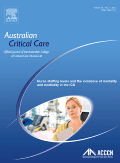
Australian Critical Care
Scope & Guideline
Fostering excellence in critical care practices.
Introduction
Aims and Scopes
- Clinical Practice and Guidelines:
Focuses on the development, implementation, and evaluation of clinical guidelines and best practices in critical care settings to enhance patient safety and care quality. - Patient Outcomes and Quality of Life:
Investigates the long-term outcomes of critically ill patients, including quality of life post-ICU stay, and factors influencing recovery. - Innovative Care Models:
Explores new models of care delivery in ICUs, including interdisciplinary approaches, family involvement, and the integration of allied health professionals. - Research Methodology and Evidence-Based Practice:
Encourages studies that refine research methodologies and promote the application of evidence-based practices in critical care. - Psychological and Emotional Wellbeing:
Examines the psychological impacts of critical illness on patients and families, as well as the wellbeing of healthcare providers. - Nutritional Support and Management:
Focuses on nutritional interventions and their impact on recovery and outcomes for critically ill patients. - Technological Innovations:
Investigates the use of technology and innovations in monitoring, treatment, and communication within the ICU. - Education and Training:
Addresses the educational needs of healthcare professionals in critical care, promoting ongoing professional development and competency.
Trending and Emerging
- Telehealth and Remote Monitoring:
Recent publications emphasize the role of telehealth and remote monitoring systems in ICU settings, particularly in light of the COVID-19 pandemic, showcasing their potential to enhance patient care. - Family-Centered Care Initiatives:
There is an increasing focus on research exploring family involvement in patient care decisions and support, recognizing the critical role families play in the recovery process. - Mental Health and Resilience of Healthcare Workers:
Emerging studies address the psychological impact of working in critical care environments, particularly during crises, and the importance of supporting staff mental health. - Integrative and Holistic Care Approaches:
A trend towards integrative and holistic care models is evident, with research exploring the benefits of combining traditional medical interventions with complementary therapies. - Data Analytics and Predictive Modeling:
The use of big data and predictive analytics to improve patient outcomes and operational efficiency in ICUs is gaining traction, reflecting advancements in technology. - Nutrition and Metabolic Management:
A renewed emphasis on the role of nutrition in critically ill patients is evident, with studies investigating tailored nutritional strategies and their impact on recovery. - Diversity and Inclusion in Critical Care Research:
There is a growing trend towards addressing issues of diversity and social determinants of health within critical care research, enhancing the inclusivity of studies and practices.
Declining or Waning
- Traditional Mechanical Ventilation Practices:
Research centered around conventional mechanical ventilation strategies has diminished as newer, more innovative approaches gain prominence. - Single-Dimensional Patient Assessments:
There is a decline in studies focusing solely on one-dimensional assessments of patient outcomes, with a shift towards more holistic, multi-faceted evaluations. - Standardised Protocols for All Patients:
The focus on standardised protocols that apply uniformly across all patients is waning, as there is increasing recognition of the need for personalised care plans. - Acute Care Without Follow-Up Considerations:
Research that does not consider post-ICU follow-up care and its impact on patient outcomes has decreased, reflecting a growing awareness of the continuum of care.
Similar Journals

Critical Care Nursing Quarterly
Pioneering Research for Lifesaving PracticesCritical Care Nursing Quarterly is a distinguished journal published by Lippincott Williams & Wilkins, catering to the vital field of critical care nursing. With an ISSN of 0887-9303 and an E-ISSN of 1550-5111, this journal has been contributing to the advancement of nursing practices since its inception in 1987. Over the years, it has gained recognition, earning a Q3 ranking in Critical Care Nursing for 2023 with a Scopus rank of #9 out of 27, placing it in the 68th percentile of its category. As a non-open access journal, it offers a curated selection of high-quality articles designed to disseminate critical findings, innovative practices, and essential reviews relating to nursing in critical care settings. The journal's ongoing commitment to improving patient care through research and education highlights its pivotal role in shaping the future of critical care nursing. For researchers, professionals, and students alike, Critical Care Nursing Quarterly serves as an indispensable resource in a field that impacts lives daily.
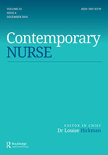
Contemporary Nurse
Bridging research and practice in the evolving field of nursing.Contemporary Nurse is a leading journal in the field of nursing, published by Routledge Journals, Taylor & Francis Ltd. With a commitment to advancing healthcare practice through innovative research, this journal serves as an essential resource for nursing professionals, researchers, and students alike. Its Q2 ranking in the field underscores its influence and significance, placing it among the top journals within its category. The journal covers a broad scope of topics within nursing, ensuring that it remains relevant to contemporary healthcare challenges. The journal, which has been in publication since 1992, welcomes a diverse range of articles that contribute to nursing education, practice, and policy. While it does not currently offer open access, articles are accessible through institutional subscriptions. As the nursing field continues to evolve, Contemporary Nurse remains a vital platform for scholars and practitioners to disseminate groundbreaking research and engage with new ideas.
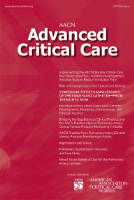
AACN Advanced Critical Care
Advancing critical care knowledge for better patient outcomes.AACN Advanced Critical Care, published by the American Association of Critical-Care Nurses, serves as an essential resource in the field of critical care nursing and emergency medicine. With an ISSN of 1559-7768 and an E-ISSN of 1559-7776, this peer-reviewed journal is committed to advancing the knowledge and practice of critical care through rigorous research and innovative clinical insights. The journal holds a reputable position within its field, achieving a Q2 ranking in Critical Care Nursing and Emergency Medicine, alongside a Q3 ranking in miscellaneous Medicine categories for 2023. With a convergence of scholarly contributions from 2006 to 2024, it strives to explore the latest advancements and challenges in critical care environments, ensuring that its readership of researchers, healthcare professionals, and students are well-informed of emerging trends and best practices. The journal does not offer Open Access, however, its impact and relevance are evident from its Scopus rankings, which place it at a commendable #14 in Critical Care Nursing and #47 in Emergency Medicine. As a crucial platform for knowledge dissemination, AACN Advanced Critical Care plays a vital role in enhancing clinical effectiveness and improving patient outcomes in acutely ill populations.
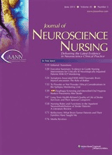
JOURNAL OF NEUROSCIENCE NURSING
Leading the Way in Neuroscience Nursing ResearchJournal of Neuroscience Nursing, published by Lippincott Williams & Wilkins, stands as a pivotal resource within the interdisciplinary field of neuroscience and nursing. With an ISSN of 0888-0395 and E-ISSN of 1945-2810, this journal has been dedicated to advancing knowledge and practice in neuroscience nursing since its inception in 1986. It aims to provide a platform for the dissemination of significant research, clinical guidelines, and innovative care strategies that shape the future of nursing in the neurological domain. The journal is recognized in various categories, achieving a Q1 ranking in Medical and Surgical Nursing and a Q3 ranking in Neurology (Clinical) as of 2023, highlighting its influence and relevance in the medical community. Although it does not operate on an open-access model, the journal's commitment to quality is evidenced by its strong Scopus rankings, including a notable rank of #3 out of 26 in Nursing - Medical and Surgical Nursing, reflecting its vital role in fostering scholarly discourse. Located in Philadelphia, PA, the Journal of Neuroscience Nursing is an essential publication for researchers, practitioners, and students dedicated to improving patient outcomes and advancing the field of neuroscience nursing.

Dimensions of Critical Care Nursing
Shaping the Future of Critical Care with Cutting-Edge ResearchDimensions of Critical Care Nursing, published by Lippincott Williams & Wilkins, is a premier journal dedicated to advancing the knowledge and practices within the fields of critical care and emergency nursing. With a distinguished history dating back to 1982, this journal plays a vital role in disseminating cutting-edge research, clinical advancements, and educational resources aimed at enhancing patient care in high-stakes environments. The journal is ranked in the Q2 quartile for both Critical Care Nursing and Emergency Nursing, reflecting its significant impact on the nursing field, with Scopus rankings placing it at #11 in Critical Care Nursing and #14 in Emergency Nursing. Targeting a multidisciplinary audience of researchers, clinicians, and students, the journal serves as a critical platform for discussions surrounding innovative patient care strategies, evidence-based practices, and emerging trends in critical nursing. Although it is not an open-access journal, it provides valuable insights that are essential for shaping the future of nursing practice. Stay informed on the latest research and contribute to the evolving landscape of critical and emergency care through Dimensions of Critical Care Nursing.

Revista Rol de Enfermeria
Elevating Nursing Knowledge for a Healthier TomorrowRevista Rol de Enfermeria, published by EDICIONES ROL S L, is a distinguished peer-reviewed journal that has been a cornerstone of nursing knowledge and practice since its inception in 1980. With a specific focus on the field of nursing and healthcare, this journal serves as a vital platform for researchers, clinicians, and educators to disseminate their findings, enhance professional practices, and support the development of evidence-based nursing care. Although its coverage in Scopus has been discontinued as of 2016, the journal has maintained an essential role in the nursing community, contributing to the advancement of general medicine as evidenced by its ranking in Scopus at #679 out of 862, placing it within the 21st percentile. While Revista Rol de Enfermeria does not currently offer an open access model, its historical significance and thematic relevance make it a valuable resource for professionals seeking to stay informed about the latest developments in nursing research and education. Situated in Barcelona, Spain, it continues to reflect the dynamic evolution of nursing practice across diverse healthcare landscapes.

Florence Nightingale Journal of Nursing
Advancing nursing knowledge for a healthier tomorrow.Florence Nightingale Journal of Nursing is a renowned academic publication dedicated to advancing the field of nursing through rigorous research and scholarly discourse. Published by AVES, the journal operates on an Open Access model since its inception in 1991, ensuring that high-quality research is readily available to all members of the global nursing community. With an ISSN of 2687-6442, it aims to provide a platform for innovative findings and methodologies that enhance nursing practices and education. Despite its rank of #35 out of 45 in the Scopus category for Nursing (miscellaneous), and its position in the 23rd percentile, the journal continues to attract the attention of healthcare professionals, researchers, and students alike, fostering an environment of collaborative learning and evidence-based practice within the nursing discipline. Spanning a converged period from 2020 to 2024, the journal seeks to amplify vital discussions on contemporary challenges and advancements in nursing, contributing significantly to the broader healthcare landscape.
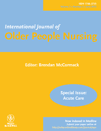
International Journal of Older People Nursing
Transforming Nursing for Older Generations.The International Journal of Older People Nursing is a pivotal publication in the field of gerontology, focusing on the unique nursing care and health challenges faced by older adults. Published by WILEY and based in the United Kingdom, this journal aims to disseminate innovative research and practice insights from 2010 to 2024, making it an essential resource for academics and practitioners alike. With an impressive 2023 Category Quartile of Q2 in Gerontology, the journal ranks in the top tier of its field, placing it at 15th among 39 journals in Nursing Gerontology according to Scopus. The journal is committed to providing a platform for rigorous scientific inquiry, facilitating improvements in nursing practices, and promoting evidence-based care for older adults. Researchers, professionals, and students can benefit from the high-impact contributions that address the complexities and richness of aging, thus enhancing the quality of care and life for older populations.

Recherche en Soins Infirmiers
Empowering healthcare professionals with vital knowledge.Recherche en Soins Infirmiers, published by the ASSOC RECHERCHE & SOINS INFIRMIERS in France, offers a vital platform for sharing innovative research and insights in the field of nursing care. With its ISSN 0297-2964 and E-ISSN 2271-8362, this journal serves as an essential resource for healthcare professionals, researchers, and students alike, striving to advance nursing practices and improve patient care. Although it currently holds a Q4 ranking in the 'Medicine (Miscellaneous)' category and occupies a position of rank #468 out of 636 in the Scopus General Medicine category, it is dedicated to fostering scholarly communication and collaboration. The journal's scope reflects a comprehensive approach to nursing theories, practices, and innovations from the years 1996 to 2022, with ongoing publications anticipated for 2024. Despite the absence of an open access model, the journal continues to publish works that address pressing healthcare challenges, thereby contributing significantly to the advancement of nursing as a discipline.

Japan Journal of Nursing Science
Innovating Practices, Elevating Patient CareJapan Journal of Nursing Science, published by WILEY, serves as a pivotal resource in the field of nursing, focusing on innovative research and theoretical developments that enhance nursing science practices. With an ISSN of 1742-7932, this journal has established itself as a reputable platform, reflected in its 2023 rankings, which place it in the Q2 category for both Medicine (miscellaneous) and Research and Theory. Covering a broad range of topics crucial to the advancement of nursing, the journal provides researchers, professionals, and students access to high-quality studies, methodologies, and discussions that shape contemporary nursing practices and policies. Though not an Open Access journal, it contributes significantly to the academic discourse and research community, with emphasis on fostering evidence-based practices and promoting excellence in nursing education and healthcare delivery. With a cumulative publishing history from 2006 to the present, the Japan Journal of Nursing Science is committed to disseminating vital knowledge that enriches the nursing profession and improves patient care.